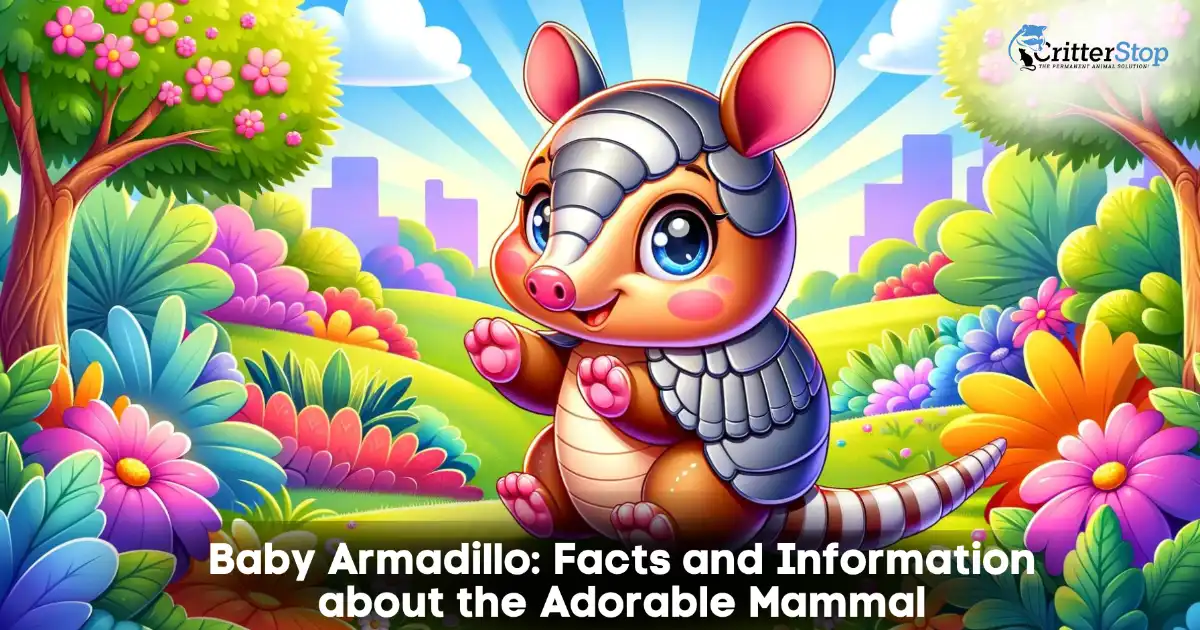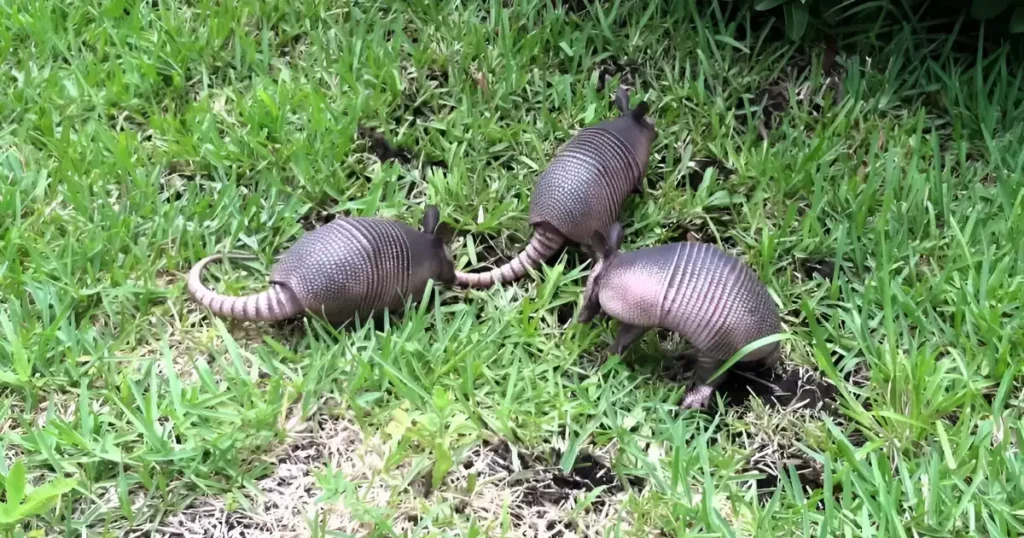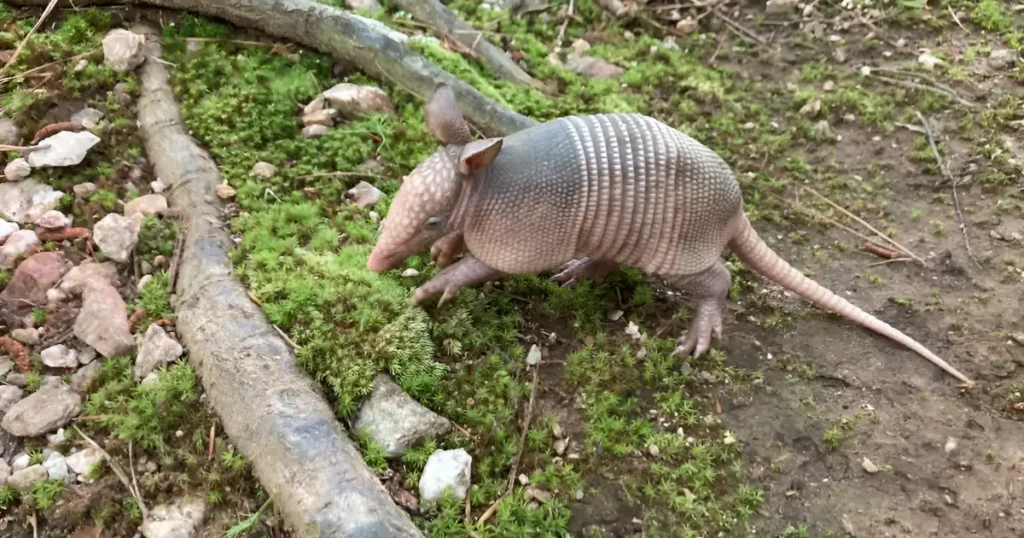
The baby armadillo is a fascinating creature that has captured the attention of many animal lovers. These small, armored mammals are native to the Americas and are known for their unique appearance and behavior.
Baby armadillos are born blind and hairless, weighing only a few ounces. They rely on their mother for protection and nourishment, and can often be found snuggled up against her belly. As they grow, they develop their characteristic armor, which is made up of bony plates covered in tough, scaly skin.
Despite their tough exterior, baby armadillos are quite vulnerable in the wild. Many predators can put their lives in danger, including birds of prey, wild cats, and even humans. However, with the help of their mothers and their instincts, many baby armadillos can survive and thrive in their environments.

Armadillos are small mammals that belong to the family Dasypodidae. There are 21 different species of armadillos, but the nine-banded armadillo is the most common species in North America. They can be found in several different habitats, including forests, grasslands, and deserts. They are primarily found in South America, but some species can also be seen in other regions of the world, where they have been introduced.
Armadillos are known for their hard, armored shells that protect them from predators. Nine-banded armadillos are also unique in that they give birth to litters of identical quadruplets. Baby armadillos are born fully formed, but they are small and helpless. They obtain their nourishment and protection from their mother's milk. Armadillos are also known for their long snouts, which they use to sniff out food. They primarily feed on insects and other small invertebrates.
Armadillos are generally solitary animals, but they may form small groups during mating season. They are most active at night, as they are nocturnal. Despite their hard shells, armadillos are vulnerable to predators such as coyotes, bobcats, and birds of prey. Being hit by cars is also a risk when they are crossing roads.
Overall, armadillos are fascinating animals with unique physical characteristics and behaviors. these creatures are an example of the diversity of life on our planet, which we can appreciate by understanding more about them.

Baby armadillos are born as a result of successful mating between a male and female armadillo. Armadillos are solitary animals, but they come together for mating purposes. The strong sense of smell that males have can detect a female in heat from a distance. They communicate with each other through scent marking and vocalizations to establish territories and attract mates.
After mating, the female armadillo, depending on the species, undergoes a gestation period of around 60 to 120 days. The gestation period is shorter for smaller armadillo species. The female armadillo gives birth to a litter of 1-12 pups, depending on the species. The newborn armadillos are born with a soft, leathery shell that hardens within a few days.
The newborn armadillos, also known as pups, are born blind and helpless. They rely on their mother for warmth, protection, and milk. The mother armadillo nurses her young for several weeks until they are old enough to start eating solid food. Until they can fend for themselves, the pups stay for several months with their mother.
In conclusion, the process of reproduction and development in baby armadillos is fascinating. From mating behaviors to the care of newborn armadillos, the process is carefully orchestrated to ensure the survival of the species.

Baby armadillos are primarily insectivores, feeding on ants, termites, and other small insects. They have a sharp sense of smell, which they use to locate their prey. In addition to insects, baby armadillos also eat some plant material, such as fruits and seeds.
It is important to note that baby armadillos rely on their mother's milk for the first few months of their life because they are born with an underdeveloped digestive system. They begin to eat solid food once they are weaned.
Baby armadillos are born blind and hairless, weighing only a few ounces. They depend on their mother for food and protection completely. After a few weeks, they begin to develop a coat of hair and their eyesight improves.
As they grow, baby armadillos become more independent and start to explore their surroundings. They learn to dig for food and develop their sense of smell. They are fully weaned and able to fend for themselves by the time they are six months old.
Overall, baby armadillos are fascinating creatures that are an important part of their ecosystem. Despite their small size and vulnerable nature, they are resilient and adaptable, able to survive in various environments.
Baby armadillos face many threats in their natural habitat. Coyotes, birds of prey, and foxes are some of the predators they face. Armadillos are not fast runners and have poor eyesight, making them vulnerable to attack. However, their tough, armor-like skin provides some protection against predators.
In addition to natural predators, baby armadillos may also be threatened by humans. Their native range may be disrupted and population losses may result from habitat loss and fragmentation brought on by urbanization and agriculture. Road mortality is also a major concern for armadillos, as, while crossing roads, they are often hit by cars.
Conservation efforts for baby armadillos are focused on protecting their habitats and reducing human impacts. This includes connecting fragmented habitats by creating wildlife corridors and preserving natural areas. In addition, efforts are being made to reduce the number of armadillo deaths on roads through education and infrastructure improvements.
Raising awareness about the importance of armadillos and their role in the ecosystem is the purpose of many organizations. By educating the public and promoting conservation efforts, these groups hope to ensure the survival of baby armadillos and their species as a whole.
Overall, baby armadillos face several threats in the wild, but certain people and organizations work toward protecting them and their habitats. By working together, we can help these unique and fascinating creatures thrive for generations.

While baby armadillos may seem like cute and cuddly pets, it is important to note that they are not suitable for domestication. Armadillos are wild animals and have not been bred for generations in captivity, making them unsuitable for life in a human household. Additionally, armadillos carry a variety of diseases that can be transmitted to humans, including leprosy.
Even if a person were to obtain a permit to keep an armadillo as a pet, it is important to note that they require a specialized diet and environment. Armadillos are burrowing animals and require a large enclosure with plenty of space to dig and explore. They also require a diet high in insects and other protein sources, which can be difficult to provide in a domestic setting.
As urban areas continue to expand, the habitat of baby armadillos is being increasingly threatened. Armadillos are adapted to life in open grasslands and wooded areas, but as these areas are cleared for development, their populations are declining. Additionally, armadillos are often victims of roadkill as they wander onto highways and other busy roads.
Humans need to be mindful of the impact of urbanization on wildlife and take steps to preserve natural habitats. This can include creating wildlife corridors and protected areas, as well as reducing the use of pesticides and other chemicals that can harm armadillos and other animals.
In conclusion, while baby armadillos may seem like fascinating animals, it is crucial to respect their natural habitat and avoid attempting to domesticate them. By taking measures to preserve natural habitats and reduce the impact of urbanization, we can help ensure that these unique animals continue to thrive in the wild.
If you are dealing with newborn armadillos in your home, you need to hire a humane wildlife removal professional. This way, your family will enjoy a home free of armadillos while also ensuring that the armadillo family will find their home in the wild, where they can thrive, and Critter Stop does just that! We service residential & commercial customers in Texas, have a five-star reputation, and offer industry-leading guarantees. Contact Us now at (214) 234-2616 to book a free inspection and estimate today.
A baby armadillo is called a pup. Pups are born after a gestation period of around 60-120 days, depending on the species of armadillo.
Yes, armadillo pups are born with a soft, leathery shell that hardens within a few days. The shell protects them against predators and other threats.
The size of a newborn armadillo varies depending on the species, but they mostly weigh only a few ounces and are small. Some species may be as small as a golf ball, while others may be the size of a baseball.
Juvenile armadillos typically eat a diet of insects, small invertebrates, and sometimes small vertebrates such as lizards or mice. As they grow, their diet may include more plant material.
In most places, it is illegal to keep armadillos as pets. They are wild animals and require specialized care that most people are not equipped to provide.
The age of an armadillo pup can be determined by examining the size and development of its shell, as well as its teeth and other physical features. However, this should only be done by a trained professional, as handling wild animals can be dangerous.
Visit our Critter Library and learn more about our furry friends